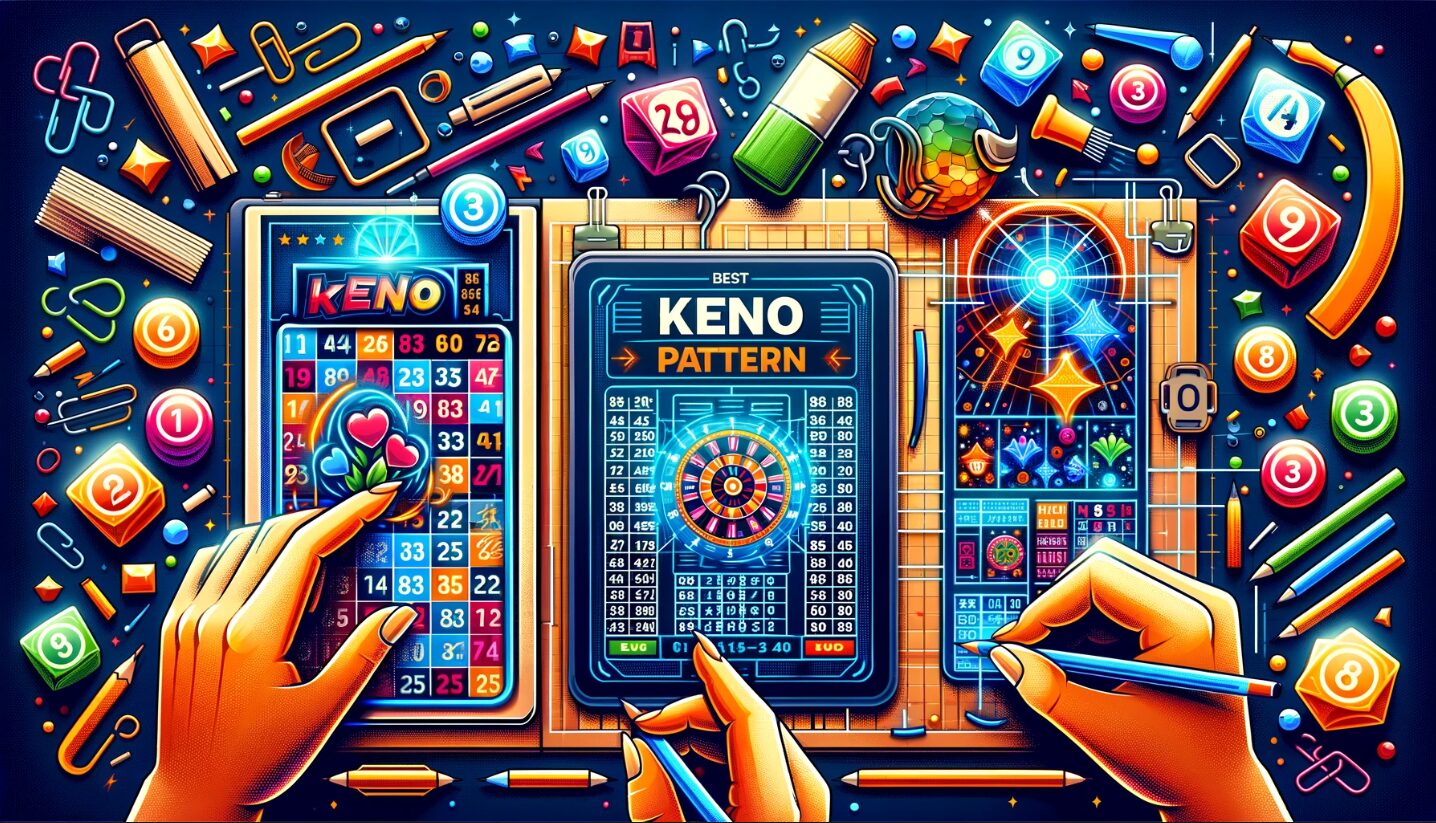Welcome to the intriguing world of keno patterns, where every play is a new adventure. In this guide, we’re set to embark on a fascinating exploration of the patterns keno players swear by, from the seemingly simple to the complex and everything in between.
But before we dive into the depths of popular keno patterns and strategies, here’s an essential nugget of wisdom to keep in mind: in the grand scheme of keno, every number is an independent event, with odds as evenly spread as the sands on a beach. That’s right, despite our human penchant for finding patterns in the chaos, the draw is as random as nature itself.
However, that’s precisely where the charm of keno lies. It’s a game that invites us to dream, to strategize, and to indulge in the thrill of the chase, even though we know the outcome is governed by chance. So, whether you’re drawn to the allure of numbers that dance in predictable sequences or prefer the thrill of random selection, our journey through keno patterns that win is designed to entertain and enlighten.
Popular Keno Patterns Explained
1. Straight Lines
- Description: Players choose numbers that form straight lines on the Keno card, either vertically, horizontally, or diagonally.
- Example: Choosing numbers 1, 2, 3, 4, and 5 forms a horizontal line at the top of a standard Keno card.
2. The Box Pattern
- Description: This involves selecting numbers that form a box or square on the card.
- Example: Picking numbers 11, 12, 21, and 22 on a standard Keno grid creates a small box in one of the corners.
3. The Cross Pattern
- Description: Players select numbers in a formation that resembles a cross, covering a central spot and stretching outwards.
- Example: Choosing numbers 3, 13, 23, 33, 43 (vertical line), and 31, 32, 33, 34, 35 (horizontal line intersecting at 33) forms a cross pattern on the card.
4. Number Clusters
- Description: This strategy involves picking numbers that are clustered together on the Keno board.
- Example: Selecting a group like 55, 56, 65, 66, which are adjacent to each other, forms a cluster.
5. Letters and Shapes
- Description: Some players enjoy selecting numbers that form letters of the alphabet or recognizable shapes (like hearts or diamonds).
- Example: To form the letter “X,” you might choose numbers 3, 7, 33, 37 (forming two diagonal lines that intersect in the middle of the card).
6. The Zigzag Pattern
- Description: In this approach, players pick numbers creating zigzag patterns across the card.
- Example: Numbers like 1, 11, 21, 12, and 2 form a zigzag pattern starting from the top left corner.
7. Edges and Borders
- Description: Focusing on the numbers that outline the perimeter of the Keno card.
- Example: Selecting all the numbers in the outermost rows and columns creates a border around the card.
Winning Keno Patterns – We Put Them to the Test
We played in five different keno draws, starting with a $100 bankroll. Here are the results, including the winning numbers for each draw.
| Draw # | Winning Numbers | Pattern Tested | Wins/Losses |
|---|---|---|---|
| 1 | 2 5 8 10 14 16 19 21 25 29 | Straight Lines | +$8 |
| 2 | 1 3 7 11 12 13 15 18 22 30 | ZigZag | -$2 |
| 3 | 4 6 9 17 20 23 24 26 28 31 | Edges & Borders | -$12 |
| 4 | 3 7 11 12 16 18 21 22 24 27 | Cross Pattern | -$22 |
| 5 | 1 2 5 8 10 13 14 15 19 23 | Box Pattern | -$32 |
The probability of each keno number being drawn is assumed to be equal at 0.09% for simplicity. In reality, the probability of each number being drawn may vary. The numbers drawn in any given game are truly random and don’t follow any discernible sequence.
As you can see, the results are random. You make money sometimes, and you lose money other times. That’s the game – no matter what keno patterns you use, it’s largely down to Lady Luck. So, pick your favorites, don’t think too much about it, and have fun!
Want to play play real money online keno? Make sure you pick an honest site. There’s no point in knowing the best keno numbers and combinations if the casino won’t pay you when you win.



